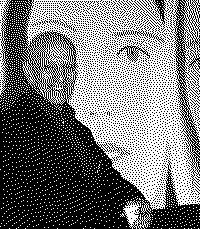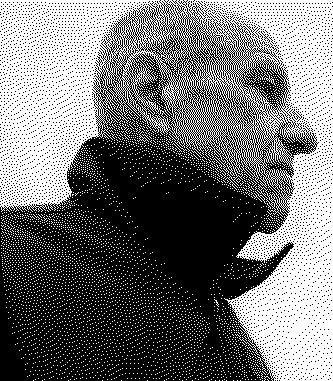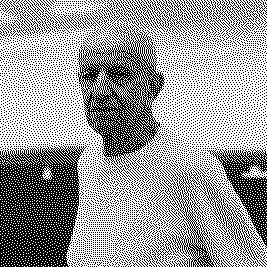Artists/Alex Katz
Fast Facts
Associated with Pop Art
Katz is often associated with the Pop Art movement, though he personally rejects this classification. His style is characterized by its flatness, simplicity, and clarity of form, which can be seen as a precursor to the Pop Art aesthetic.
Portraiture and Landscapes
Katz is renowned for his large-scale portraits and landscapes. His portraits, often of family and friends, are notable for their emotional detachment and smooth, flat surfaces. The landscapes typically feature bold, simplified forms and are also characterized by a similar flatness.
Color and Form
His use of color is often bold and impactful, using large areas of unmodulated color. This simplicity in color and form gives his work a graphic quality, making them striking and easily recognizable.
Innovative Techniques
Katz is known for his innovative techniques in painting, particularly his large-scale works which he often paints from life in a single sitting. This approach gives his works a spontaneous and vibrant quality.
Multidisciplinary Approach
In addition to painting, Katz has also worked in printmaking, sculpture, and even theater design, showcasing his versatility as an artist.
Biography



Alex Katz, born on July 24, 1927, in Sheepshead Bay, Brooklyn, New York, is a prominent American figurative painter known for his simplified, large-scale images of family, friends, and landscapes.
Growing up in Queens, New York, as the son of Russian immigrants, Katz's early life was steeped in the arts, encouraged by his family's interest in poetry and the arts. After serving in the navy, Katz enrolled at the Cooper Union School of Art in New York City in 1946, later attending the Skowhegan School of Painting and Sculpture in Maine, which profoundly influenced his approach to painting, particularly in working directly from the landscape.
Katz's career, spanning over seven decades, is marked by a distinctive style that emerged in opposition to the dominant Abstract Expressionism of the 1950s. By the mid-1950s, Katz had developed a reductive, flat approach to painting, often portraying his wife, Ada, and engaging in group portraits set against unmodulated colored backgrounds. His work, characterized by its flatness and simplification, reflects a blend of modernist influences and a keen interest in the American vernacular tradition. Katz's canvases grew in size throughout the 1960s and '70s, featuring multipaneled paintings and showcasing his admiration for Henri Matisse and the School of Paris.
Significantly contributing to contemporary art, Katz pioneered the "cutouts" technique in the late 1950s. This approach involved painting on cut panels of wood or aluminum, blurring the lines between painting and sculpture and introducing a cinematic presence into his works. These cutouts often featured close-ups of figures or portrayed groups of figures, reflecting the social world of Katz's circle of painters, poets, critics, and other colleagues.
Throughout his career, Katz has engaged in various collaborations with poets and writers, producing works that intertwine his visual art with poetry, further evidencing the interdisciplinary nature of his artistic practice. His involvement in printmaking, set and costume design for choreography, and public commissions, including works displayed in Times Square and a mural in the United States Attorney's Building in New York City, highlight Katz's versatile contribution to the art world.
Katz's work has been the subject of more than 200 solo exhibitions and nearly 500 group exhibitions globally, underscoring his significant impact on contemporary art. His innovative approach to figuration, combined with his exploration of color, form, and scale, positions Katz as a central figure in the narrative of American art history (Wikipedia) (The Art Story) (Encyclopedia Britannica).
Importance
Alex Katz's importance in the art world can be attributed to several key factors that underscore his contributions and lasting influence on contemporary art:
Pioneering Role in Artistic Movements
Katz played a significant role in the transition from Abstract Expressionism to the more figurative movements that followed, including Pop Art. His work prefigured the Pop Art movement with its emphasis on flatness, everyday subjects, and the influence of commercial and popular culture, making him a forerunner in this significant shift in American art (Encyclopedia Britannica).
Innovative Use of Form and Color
Katz is renowned for his flat, simplified forms, which challenge traditional notions of depth and perspective in painting. His bold use of color and flat application not only became a hallmark of his style but also influenced subsequent generations of artists. By prioritizing color, line, and the flatness of form, Katz's work engages with fundamental questions of perception and representation, contributing to ongoing debates within the art world (Art in Context).
Contribution to Figurative Painting
At a time when abstraction dominated the American art scene, Katz remained committed to the figurative tradition, albeit in a highly stylized and modern way. His portraits and landscapes, characterized by their minimalistic aesthetic and emotional subtlety, have reinvigorated figurative painting and demonstrated its potential for contemporary relevance (Encyclopedia Britannica).
Cross-disciplinary Collaborations
Katz's extensive collaborations with poets and writers since the 1960s underscore the interdisciplinary nature of his practice. These collaborations have not only enriched his own work but also highlighted the fruitful intersections between visual art and literature, thereby broadening the scope of both fields (Wikipedia).
Influence on Younger Generations
Katz's unique aesthetic and approach to painting have influenced numerous contemporary artists. By melding abstraction with figuration and emphasizing the formal aspects of painting, he has provided a model for artists exploring the boundary between these two poles. His impact is reflected in the way many younger painters engage with the formal possibilities of the medium and the representation of contemporary life (Richard Gray Gallery).
Legacy and Recognition
With a career spanning over seven decades, Katz's work has been the subject of more than 200 solo exhibitions worldwide, affirming his status as a major figure in contemporary art. His consistent innovation and dedication to his craft have not only earned him critical acclaim but also a lasting place in the narrative of 20th and 21st-century art (The Art Story) (Wikipedia).
Technique
Alex Katz's painting technique is distinguished by several unique characteristics that have defined his contribution to contemporary art. His approach combines meticulous planning with a mastery of color and form, leading to the creation of artworks that are both impactful and evocative.
Preparatory Process
Katz's method involves an extensive preparatory process before he starts painting on canvas. Initially, he creates several drawings to finalize the composition. Following this, Katz makes an oil sketch on chipboard to test the color scheme. This stage is crucial for determining the palette of the final work. He then proceeds to make a life-sized drawing on brown packing paper, which he meticulously outlines with a toothed wheel. By dusting reddish pigment through these perforations, he transfers the outlines onto the canvas. Finally, he fixes these outlines with light yellow paint, setting the stage for the actual painting process (Judith Benhamou-Huet Reports).
Flatness and Form
Katz is known for the flatness of his forms, rejecting traditional notions of three-dimensional illusion. This stylistic choice emphasizes the surface of the canvas and the vibrancy of his color palette, allowing his subjects to stand out as powerful visual statements (Art in Context).
Color Usage
Color is a vital element in Katz's work. He often uses flat blocks of color to define his subjects, creating a visual impact that is both striking and inviting. Katz's color choices, driven by artistic intuition, play a critical role in evoking specific emotional responses from viewers. His masterful control over color infuses his paintings with vitality and energy (Art in Context).
Composition and Harmony
Katz's compositions are characterized by their clarity and balance. He often employs clean lines, simplified shapes, and careful consideration of negative space, creating a harmonious and balanced visual experience. This refined composition draws attention to the essential elements of his subjects (Art in Context).
Timelessness and Contemporary Appeal
Despite being deeply rooted in the modernist tradition, Katz's works possess a timeless quality that transcends specific eras or trends. His ability to capture the essence of his subjects in a manner that feels both familiar and universal has contributed to the enduring appeal of his art (Art in Context).
Technique for Cut-Outs
In his later years, Katz has also been known for his cut-outs, a technique where the paintings take on the shape of the subject and are then arranged within the space to establish a rhythm through the succession of figures (Judith Benhamou-Huet Reports).













